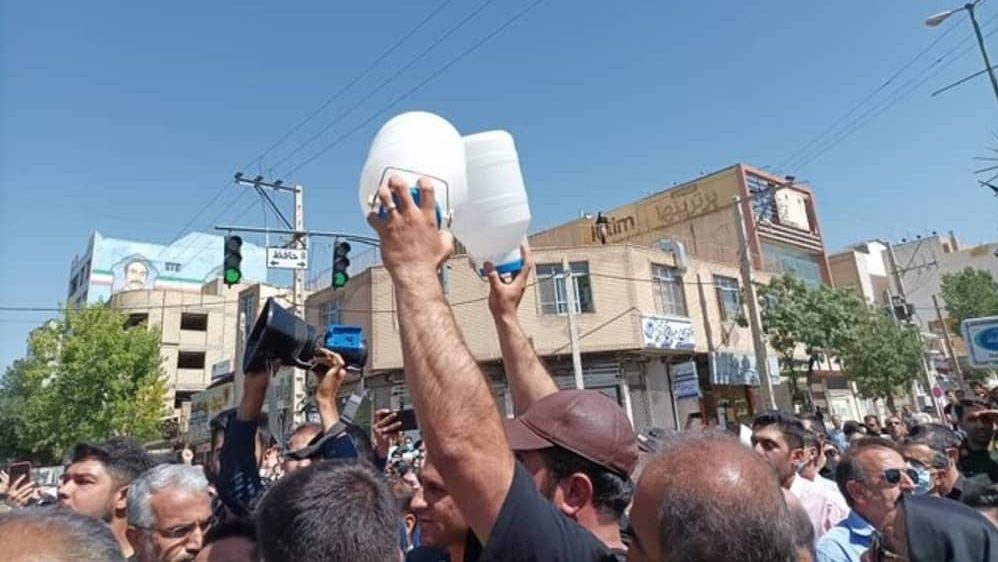New Wilson County school to open with temporary sewage system – News Channel 5 Nashville

Report on LaGuardo Elementary School’s Wastewater Infrastructure Deficiencies and Sustainable Development Goal Implications
Executive Summary
LaGuardo Elementary School in Wilson County is scheduled to open on August 1 without a permanent sewage system. This is due to significant regulatory violations by the Wilson County Water and Wastewater Authority (WWAWC), as cited by the Tennessee Department of Environment and Conservation (TDEC). A temporary “pump and haul” solution has been approved, but the situation highlights critical challenges related to several United Nations Sustainable Development Goals (SDGs), particularly those concerning water, health, education, and sustainable communities.
Regulatory Non-Compliance and Environmental Risks
Violations of SDG 6: Clean Water and Sanitation
The core of the issue is a failure to provide safe and sustainable sanitation services, a key target of SDG 6. TDEC issued a Notice of Violation to WWAWC after an inspection revealed multiple failures in managing wastewater, directly threatening local water quality and environmental health.
- Hydraulic Overload: The Academy Road Treatment Facility showed evidence of “saturated soils, ponded effluent, and overland flow,” indicating the system is overwhelmed and releasing inadequately treated wastewater into the environment. This contravenes SDG Target 6.3, which aims to improve water quality by reducing pollution and minimizing the release of hazardous chemicals.
- Misrepresentation of Service Load: The permit application falsely stated the system’s capacity and usage. This lack of transparency undermines the effective governance required to manage water and sanitation infrastructure sustainably.
- Improper Land Application: The facility is utilizing only 2.6 acres for land application instead of the permitted 8.8 acres, resulting in a loading rate three times higher than approved. This concentrates effluent, increasing the risk of soil and groundwater contamination.
- Failure to Install Approved Technology: An approved drip dispersal system, authorized in 2007, was never installed, indicating a long-term failure in infrastructure development and modernization as called for under SDG 6.
Challenges to SDG 11: Sustainable Cities and Communities
The inability to provide essential services for new developments, including a public school, represents a failure in sustainable urban planning (SDG 11). The wastewater authority’s shortcomings compromise the community’s ability to grow sustainably and ensure all citizens have access to basic services.
Institutional Failures and Community Impact
Accountability and Governance (SDG 16)
The conflict between WWAWC and TDEC points to a breakdown in institutional effectiveness and accountability, which is central to SDG 16 (Peace, Justice and Strong Institutions). TDEC cited WWAWC for providing false information and repeatedly failing to supply requested documentation, such as as-built plans for the existing system. The contractor for the wastewater authority has disputed some claims, stating that plans were approved by TDEC and that they are working to provide all necessary information. However, the documented violations suggest a significant gap in regulatory compliance and transparent governance.
Impact on Health and Education (SDG 3 & SDG 4)
The temporary solution and underlying system failures have direct implications for community well-being and education.
- SDG 3 (Good Health and Well-being): Community members have expressed concerns over the health and safety risks associated with the “pump and haul” method, including potential exposure to raw sewage and fumes from diesel trucks. This temporary measure is not a secure or sanitary long-term solution and poses potential public health risks.
- SDG 4 (Quality Education): While the school’s opening is not delayed, the lack of fundamental infrastructure creates an unstable and potentially hazardous environment that is not conducive to quality education. A safe, healthy, and sustainable school environment is a prerequisite for effective learning.
Conclusion
The opening of LaGuardo Elementary School is proceeding under a temporary and unsustainable wastewater management plan. The situation reveals profound challenges in local infrastructure governance, environmental protection, and public health. Addressing these issues requires immediate regulatory compliance by the WWAWC and a long-term commitment to developing infrastructure that aligns with the principles of the Sustainable Development Goals, ensuring clean water, safe communities, and healthy learning environments for Wilson County residents.
Analysis of Sustainable Development Goals in the Article
1. Which SDGs are addressed or connected to the issues highlighted in the article?
The article discusses issues related to wastewater management, public infrastructure, environmental protection, and institutional accountability, which directly connect to several Sustainable Development Goals (SDGs). The primary SDGs addressed are:
- SDG 6: Clean Water and Sanitation: This is the most central SDG, as the entire article revolves around the failure of a wastewater authority to provide a functional and compliant sewage system for a new school and surrounding residential area.
- SDG 4: Quality Education: The lack of a permanent sewage system directly impacts a new elementary school, threatening the safety and quality of the learning environment for students and staff.
- SDG 11: Sustainable Cities and Communities: The issue concerns the provision of essential public services (sanitation) and the management of community waste and infrastructure, which are core components of sustainable communities.
- SDG 16: Peace, Justice and Strong Institutions: The article highlights significant failures in governance, accountability, and transparency within the local wastewater authority, as evidenced by multiple violations and disputes with state regulators.
2. What specific targets under those SDGs can be identified based on the article’s content?
Based on the specific problems described, the following targets are relevant:
- Under SDG 6 (Clean Water and Sanitation):
- Target 6.2: “By 2030, achieve access to adequate and equitable sanitation and hygiene for all…” The new LaGuardo Elementary school currently lacks “adequate” sanitation, relying on a temporary “pump and haul” solution.
- Target 6.3: “By 2030, improve water quality by reducing pollution, eliminating dumping and minimizing release of hazardous chemicals and materials, halving the proportion of untreated wastewater…” The state’s findings of “hydraulic overload,” “saturated soils, ponded effluent, and overland flow” point directly to the release of poorly treated wastewater and environmental pollution.
- Under SDG 4 (Quality Education):
- Target 4.a: “Build and upgrade education facilities that are child, disability and gender sensitive and provide safe, non-violent, inclusive and effective learning environments for all.” A school where community members fear students and staff might “see and smell diesel trucks hauling raw sewage, and may, God forbid, see raw sewage in the new school” does not constitute a “safe” or “effective learning environment.”
- Under SDG 11 (Sustainable Cities and Communities):
- Target 11.1: “By 2030, ensure access for all to adequate, safe and affordable housing and basic services…” The failure of the wastewater system affects a “basic service” (sanitation) for the school and the 293 connected residential homes.
- Target 11.6: “By 2030, reduce the adverse per capita environmental impact of cities, including by paying special attention to air quality and municipal and other waste management.” The improper management of wastewater, leading to land and water pollution, represents an “adverse per capita environmental impact” from municipal waste.
- Under SDG 16 (Peace, Justice and Strong Institutions):
- Target 16.6: “Develop effective, accountable and transparent institutions at all levels.” The Wilson County Water and Wastewater Authority (WWAWC) was cited for six violations, including “providing false information in their permit application” and failing to provide requested plans four times, demonstrating a lack of effectiveness, accountability, and transparency.
3. Are there any indicators mentioned or implied in the article that can be used to measure progress towards the identified targets?
The article provides several specific data points and qualitative descriptions that can serve as indicators to measure the status and progress towards the identified targets.
- For SDG 6 Targets:
- Proportion of wastewater safely treated: The article implies this is low or zero. Evidence includes the “hydraulic overload” and the fact that the land application area is operating at “three times higher than what was approved.”
- Number of residential connections served by a non-compliant system: The article states the system serves “approximately 293 residential connections” against a design for 249, indicating the scale of the service failure.
- Compliance with permitted land use for wastewater application: The system uses “only 2.6 acres for land application instead of the 8.8 acres authorized,” a clear, measurable indicator of non-compliance.
- For SDG 4 Target:
- Proportion of schools with access to basic sanitation: The article indicates that LaGuardo Elementary lacks a permanent, functional sanitation system, making it non-compliant with this basic requirement for a safe learning environment.
- For SDG 16 Target:
- Number of regulatory violations: The article explicitly states that state regulators accused the wastewater authority of “six specific violations.” Tracking the resolution of these violations would measure progress.
- Transparency and responsiveness of public institutions: The failure to provide “as-built plans of the existing system that had been requested four times since October 2024” is a qualitative indicator of a lack of transparency.
4. Summary Table of SDGs, Targets, and Indicators
| SDGs | Targets | Indicators Identified in the Article |
|---|---|---|
| SDG 6: Clean Water and Sanitation | 6.2: Achieve access to adequate and equitable sanitation.
6.3: Improve water quality by reducing pollution and untreated wastewater. |
|
| SDG 4: Quality Education | 4.a: Build and upgrade education facilities to provide safe and effective learning environments. |
|
| SDG 11: Sustainable Cities and Communities | 11.1: Ensure access for all to basic services.
11.6: Reduce the adverse environmental impact of cities, focusing on waste management. |
|
| SDG 16: Peace, Justice and Strong Institutions | 16.6: Develop effective, accountable and transparent institutions. |
|
Source: newschannel5.com

What is Your Reaction?
 Like
0
Like
0
 Dislike
0
Dislike
0
 Love
0
Love
0
 Funny
0
Funny
0
 Angry
0
Angry
0
 Sad
0
Sad
0
 Wow
0
Wow
0










































































